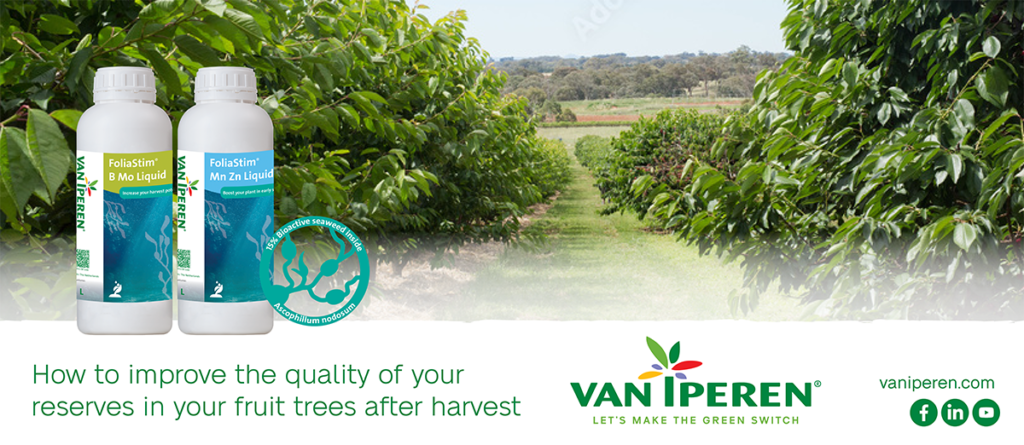Lack of reserve on perennials can have a direct effect on next year’s yield. Indeed, the trees burst on their reserves waiting for the root system to take over a bit later. Depending on the climatic conditions, this period may be longer or shorter. Here we explain how to improve the quality of reserves in your orchard after harvest.

Have you ever experienced this situation? The season starts with abundant flowering, then a low rate of fruit set, and finally, low yield. This phenomenon is completely dependent on nutritional balance at this early stage. But how can you prevent it? With the following post-harvest applications, you can cover the nutritional needs of your fruit trees.
Let’s start from the basics. All main nutrients are, of course, necessary for the proper functioning of the plant at the start of the season, but elements such as P2O5, Boron, and Zinc are essential at an early stage. The difficulty is to make them available at that precise time. How to do so? With a proper post-harvest treatment.
Why do we recommend a post-harvest treatment?
In spring, foliar application conditions are not optimal. Indeed, little or no leaf surface is available on trees. Low temperature, waterlogged and cold soils block and make elements like B and Zn unavailable. That’s why we strongly recommend applying them at the end of the season just after harvest. Why? Because we still have a large leaf area, mild temperature, and physiological activity at the end of growth when the phloem comes to build up reserves in all organs.
We suggest making one or two foliar applications depending on crops and varieties. The combination of FoliaStim® Mn Zn and FoliaStim® B Mo will strengthen the reserves of the desired elements. Together with the biostimulation effect of Stim Pure, growers can keep the foliage active longer and, therefore, increase the carbohydrate potential.

In order to complete the reserve inputs, we also recommend carrying out wood reserves or cane analyses -taking samples during the period of dormancy-, which will allow us not only to see the effectiveness of post-harvest applications but also to have information on the reserves present in the woods. This last part constitutes a very interesting starting point for elaborating a complete nutritional program for the coming season.
In summary, post-harvest applications represent the starting point of the coming season. These applications ensure the nutritional needs necessary for bud break and support the flowering of some crops. Of course, additional inputs will be necessary before and after flowering, but this will be intended to satisfy the needs of the young fruit formation.